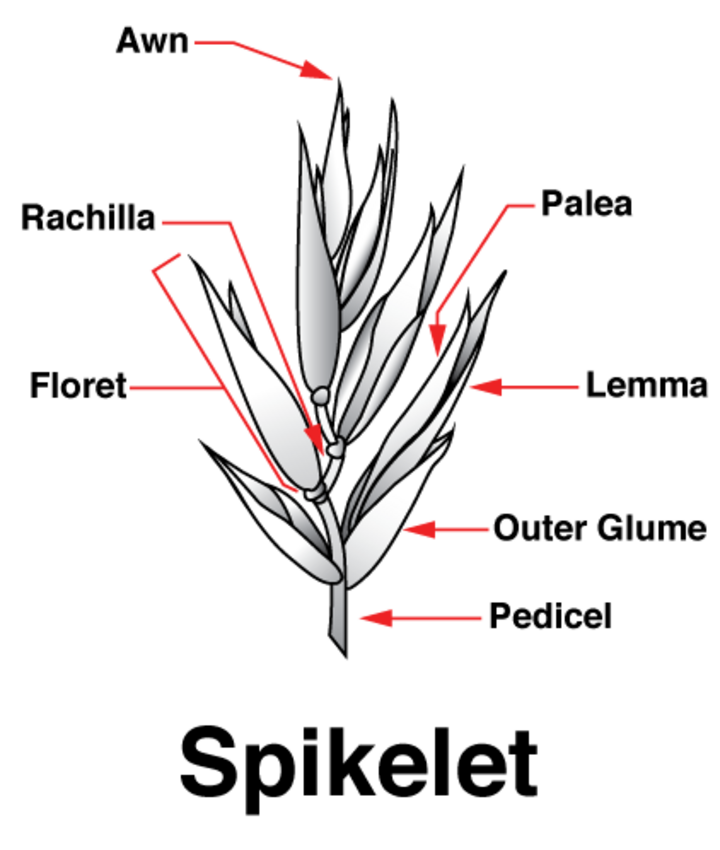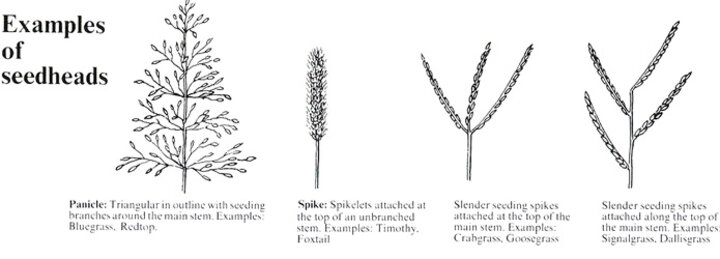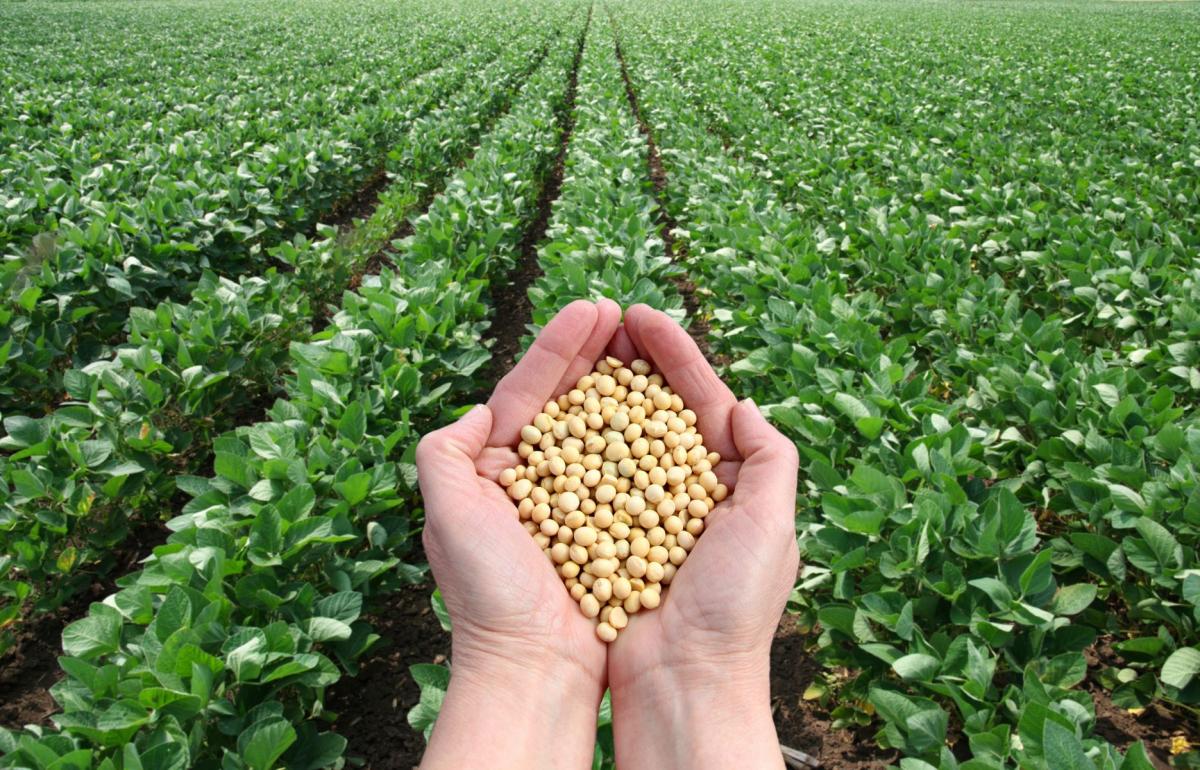Weeds
Successful weed management is a combination of proper weed identification and timing of herbicide application and/or other management approach. The smaller the weed size (usually less than 5-inch), the increased likelihood that the post-emergence herbicide applied will be more effective with control. Weeds are broadly classified into two categories: monocot (grasses) and dicot (broadleaf) weeds.
Monocot weeds:
- have a single seed leaf that emerges from the seed
- leaf veins form a parallel pattern
- floral petals are in multiples of three
- fibrous root system
Dicot weeds:
- have two seed leaves that emerge from the seed
- leaf veins that form a net pattern
- floral petals are in multiples of four or five
- taproot system

Monocot Weeds
Monocot (aka grasses) seedling identification can be challenging. Careful attention to detail is critical in proper identification as each step in the key is evaluated. In the key, check the drawings for key terms and structures you need to know to successfully identify these plants.
Parts of a Grass Plant (Figure 2):
- Node — (aka joints) which are sold and usually larger than the rest of the stem
- Internode — the part of the stem between two nodes, are usually hollow
- Stolons — stems or runners that originate at the base of the main stem and grow along surface of the ground. Roots borne at the nodes help to establish and spread the plan and to produce new plants if stolons are broken.
- Rhizomes — stems that originate at the base of the main stem and grow horizontally below the ground surface. They have nodes, internodes, and scale like leaves. Roots grow from the underside of the nodes; shoots grow from the topside.
- Leaf Blade — the expanded part of the leaf (Figure 3)
- Flat
- V-shaped or folded
- Involute (rolled inward)
- Filiform (Threadlike)
- Keeled (boat-shaped)
- Ligule — means little tongue, usually clasps the stem firmly on in the inside of the leaf at the junction of the sheath and blade. Some ligules are membranous or papery; some are only a ring of hair
- Collar — is on the outside of the leaf at the junction of sheath and blade
- Auricle — earlike lobes or appendages which are borne, one on either side, at the base of the blade. Some grasses do not have this feature.
- Leaf Sheath — borne at the node and surrounds the stem-like tube. It is characteristically split down one side, making it possible to separate the sheath from the stem without tearing the sheath. (Figure 2)
- Open - margins do not come together
- Closed - margins overlap
- Split-overlapping margins
- Flattened
- Rounded


Part of the seedhead (inflorescence) is the reproductive part of the grass plant (Figure 4):
- Spikelet — the basic unit of the seedhead. It may be pediceled (on a pedicel or footstalk) or sessile (without a pedicel)
- Floret — consists of one flower or seed enclosed in two papery membranes called lemma or palea. The florets are borne in two ranks on the rachilla.
- Rachilla — jointed stem or axi which the floret is borne.
- Lemma — Borne on the rachilla above the pair of glumes.
- Palea — At the base of the flower or seed
- Glumes — two bracts without flowers
- Awn — Veins on both the glumes and lemma that run from the base to the tip but extends beyond. Different lengths, shapes and color are often used to identify a particular grass

Seedhead Orientation (Figure 5):
- Spike — A seedhead in which one or more sessile spikelets are borne on the main axis (rachis)
- Panicle — A seedhead with a main axis and subdivided branches. It may be compacts and spikelike or open.
- Raceme — A seedhead in which the spikelets are borne on individual footstalks (Pedicels) growing directly on the main axis (rachis).


Nebraska Soybean Board graciously provided the funding for the Soybean Management Guide.
Course authored by:
Amy Timmerman, extension educator; Aaron Nygren, extension educator; Brandy VanDeWalle, extension educator; Loren Giesler, Plant Pathologist Department head; Ron Seymour, extension educator; Keith Glewen, former extension educator; Charles Shapiro, emeritus extension soil scientist; Amit Jhala, extension weed specialist; Don Treptow, former graduate student
